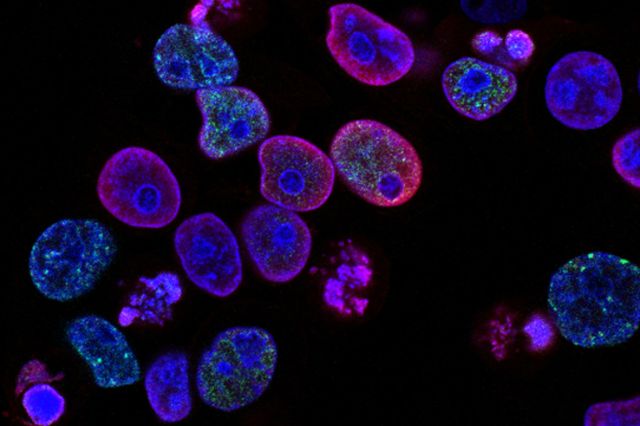A single-cell biosensor

A research group from the University of Bologna designed and built a biosensor that monitors the cell adhesion process at the level of single cells. The device could find a wide range of applications in the biomedical field, allowing for example to observe the role of single cells in tumor formation or during wound healing.
The study was published in the journal Nature Communications, and it responds to a crucial objective in the field of bioelectronics: to build efficient biosensors to monitor the cell adhesion process, i.e. the mechanism that allows cells to interact with each other.
"Cell adhesion is essential for communication between cells and the regulation of their functions. Consequently, it plays a decisive role in the development and conservation of tissues", explains Tobias Cramer, professor at the Department of Physics and Astronomy "A. Righi” of the University of Bologna, who is one of the authors of the study. "We know alterations in the cell adhesion mechanism can determine a wide range of pathologies such as tumors, arthritis, osteoporosis, and arteriosclerosis. Observing this process closely is one of the most relevant but also complex challenges for human sciences today".
The goal of the Alma Mater scientists was to create a sensor small enough to monitor the behavior of individual cells. To do this, they used an organic electrochemical transistor (OECT) based on a particular polymer – called PEDOT:PSS – which allows chemical signals to be converted directly into electrical signals, amplifying them in order to make them intelligible.
The first step was to build a highly miniaturized experimental model of the sensor, which was tested on dielectric microparticles. By placing a microparticle over the sensor, the researchers were able to detect the signal changes that occurred when the position of the microparticle changed.
The success obtained from these first experiments made it possible to further optimize the sensor and demonstrate its capabilities in an in-vitro experiment. Results were again positive: the tests established that it is possible to measure the transition between the state of adhesion and the state of detachment of a single cell.
"We demonstrated that this new OECT sensor can reliably monitor the cell adhesion process of single cells," confirms Tobias Cramer. "This result paves the way for carrying out biomedical experiments with the aim, for example, of shedding light on the role of single cells in the process of tumor formation or in the regenerative processes of wound healing."
The study is published in the journal Nature Communications with the title "AC amplification gain in organic electrochemical transistors for impedance-based single cell sensors". The authors are Filippo Bonafè, Francesco Decataldo, Isabella Zironi, Daniel Remondini, Tobias Cramer, and Beatrice Fraboni, all working at the "A. Righi" Department of Physics and Astronomy of the University of Bologna.





